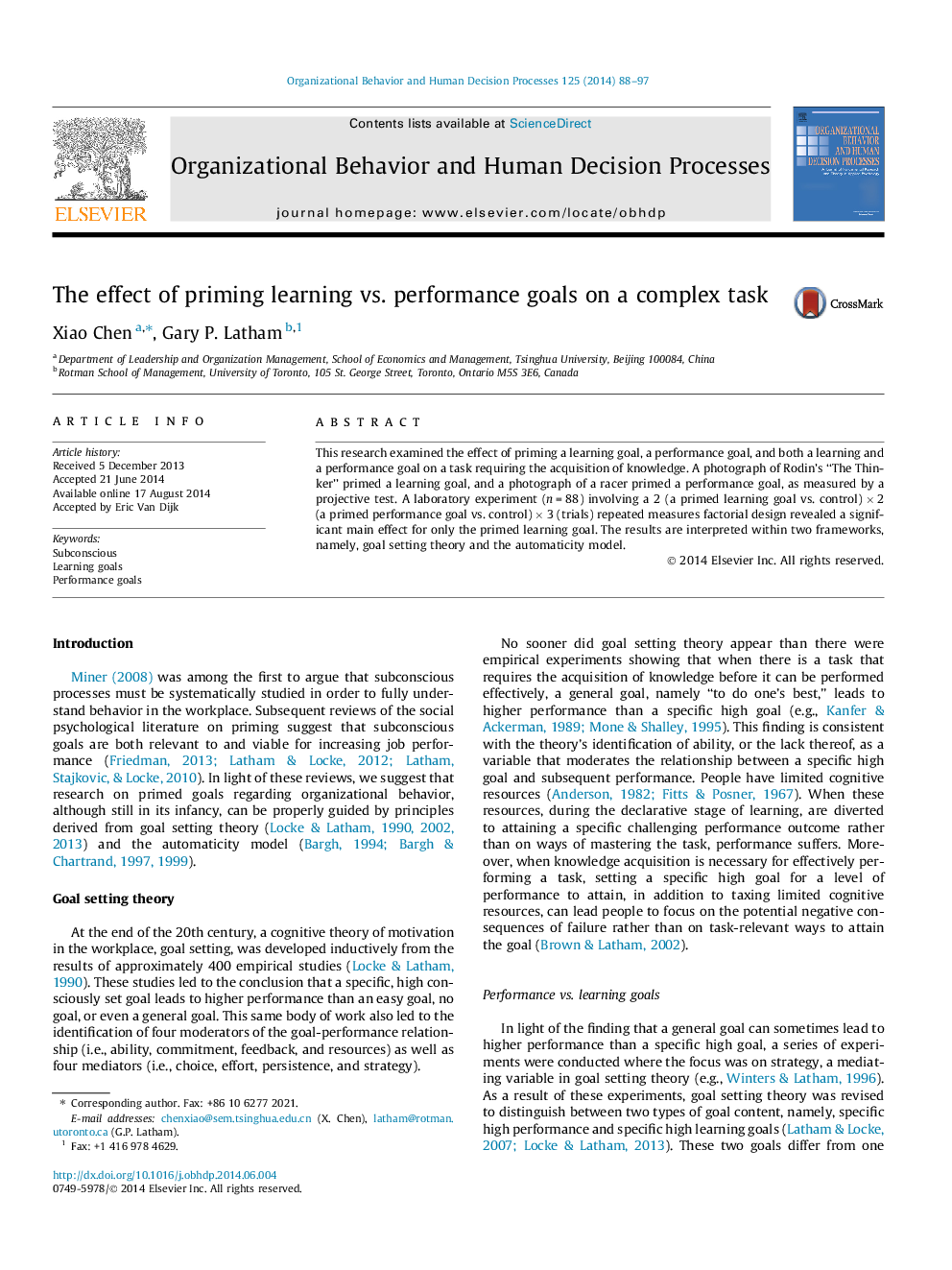| Article ID | Journal | Published Year | Pages | File Type |
|---|---|---|---|---|
| 888533 | Organizational Behavior and Human Decision Processes | 2014 | 10 Pages |
•Goal setting theory provides a theoretical framework for conducting priming research.•A photograph of Rodin’s “The Thinker” primed a learning goal.•Only a primed learning goal increases performance on a knowledge-acquisition task.
This research examined the effect of priming a learning goal, a performance goal, and both a learning and a performance goal on a task requiring the acquisition of knowledge. A photograph of Rodin’s “The Thinker” primed a learning goal, and a photograph of a racer primed a performance goal, as measured by a projective test. A laboratory experiment (n = 88) involving a 2 (a primed learning goal vs. control) × 2 (a primed performance goal vs. control) × 3 (trials) repeated measures factorial design revealed a significant main effect for only the primed learning goal. The results are interpreted within two frameworks, namely, goal setting theory and the automaticity model.
